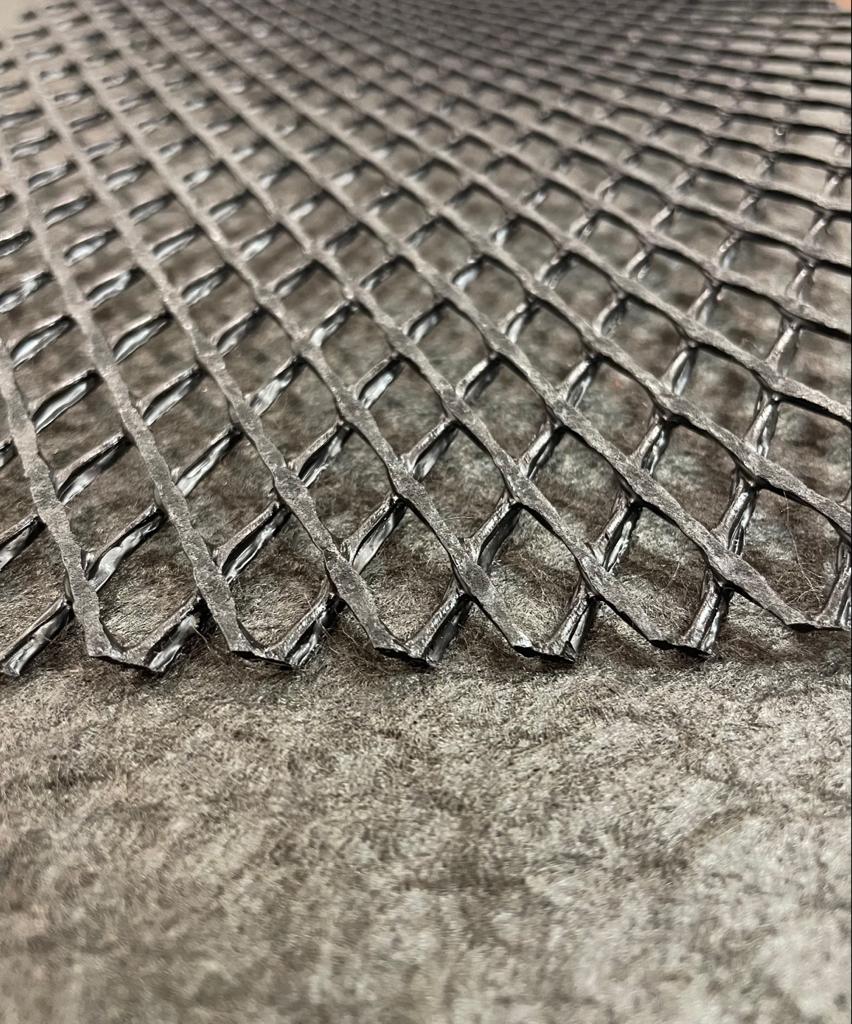What is bitumen? A successful and long-lasting structure comprises several good engineering choices of construction materials. One of the most important materials is bitumen. Bitumen is naturally available and extracted from crude oil. For over 4,000 years, it has been an integral part of the construction industry. Earlier, bitumen insulated houses, boats, castles, and other… Continue reading Bitumen
Category: Glossary Term
Glossary Term
Biplanar net
Biplanar drainage nets are geosynthetic materials used in civil engineering to improve water management, slope stabilization, and green roof systems. These innovative nets are designed to reduce erosion and ensure stability in geotechnical projects due to their unique structure, which facilitates efficient soil reinforcement and water drainage. What are geonets? Geonets are advanced geosynthetic materials … Continue reading Biplanar net
Biaxial geogrid
Biaxial geogrid: definition, application, and benefits of using biaxial geogrids A biaxial geogrid is a geosynthetic material designed with soil reinforcement in two orthogonal directions: longitudinal and transverse. This has a high tensile strength in both axes, and its versatility is therefore suitable for many applications in civil engineering. Such geogrids are manufactured using materials… Continue reading Biaxial geogrid
Backfill material
What is backfill material? Every aspect of civil engineering plays a vital role in creating a durable and long-lasting structure. One crucial material is backfill. Although this material seems to be an underdog, it plays a significant role in filling the gaps in the foundation. Before we delve into the depths of backfill material, let’s understand… Continue reading Backfill material
Atterberg limits
What are Atterberg’s limits? Constructing a structure requires several green flags before building the foundation. One of the most important checks is soil testing, which determines the soil’s behaviour. There are several methods of soil testing, but the Atterberg’s limit test is considered the most reliable. It is the foundation level of soil testing. It determines… Continue reading Atterberg limits
Asphalt roads
What is asphalt? Asphalt is a composite material obtained by the result of commixing mineral aggregates and the distillation by-product known as bitumen, which is obtained from petroleum. A long-lasting cost-effective product used mainly in road construction and rehabilitation, asphalt’s smooth elastic flexible features make it an indispensable raw material in the infrastructure industry. Its… Continue reading Asphalt roads
Asphalt reinforcement
Asphalt reinforcement: definition, use, and type Asphalt reinforcement is the process of reinforcing the layers of asphalt pavements to improve the service life of the road. Asphalt can be defined as the mixture of a petroleum biproduct with aggregate such as sand, gravel and a binder such as bitumen. It’s the final surface which is applied to… Continue reading Asphalt reinforcement
Asphalt pavement
How are they built and what are their benefits? Asphalt pavement is a composite material made of stones and sand mixed with asphalt. Asphalt is a dense, viscous, dark liquid derived from petroleum. The substance is sometimes called bitumen, a name that emphasizes its adhesive nature and its resistance to damage from water and oil.… Continue reading Asphalt pavement
Asperity height
Asperity height: Definition and importance in geosynthetics Every successful soil reinforcement system begins with a fundamental principle—friction. At Strata Geosystems, we’ve spent decades refining how our geosynthetics interact with soil. Among the key factors to this interaction is asperity height—the small-scale surface roughness that controls how effectively the soil grips the geogrid, geocell, or drainage… Continue reading Asperity height
Aperture stability modulus
What is aperture stability modulus? The Aperture Stability Modulus (ASM) is also called In-plane torsional rigidity. It can be defined as a critical parameter that evaluates the effectiveness of geogrids. These are usually made of polymer materials such as polyester, polyethene, polyvinyl alcohol, or polypropylene. It has big holes or openings that strengthen the layers… Continue reading Aperture stability modulus


